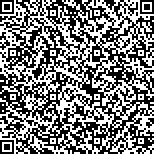下载中心
优秀审稿专家
优秀论文
相关链接
摘要

植被冠层可燃物含水率FMC(Fuel Moisture Content)是评估野火风险及估算火灾蔓延速率的重要指标。以中国西部6个典型研究区为例,基于辐射传输模型,利用Landsat 5 TM及Landsat 8 OLI遥感数据,开展草原、森林冠层FMC定量反演研究。为克服基于物理模型的病态反演问题、FMC自身的弱敏感性问题及西南森林多具复杂的双层冠层结构问题,研究中考虑了模型参数之间的相关特征,使用多波段遥感数据及耦合辐射传输模型等方法。反演结果显示,总体植被冠层FMC反演精度R2为0.64,RMSE为44.86%,其中草地冠层FMC的反演精度(R2=0.64,RMSE=47.57%)略低于森林冠层FMC的反演精度(R2=0.71,RMSE=30.82%)。为进一步论证该反演结果对野火风险评估的有效性,研究中选取并分析了2011年3月2日于云南大理白族自治州剑川县金华镇金和村森林火灾爆发前、爆发时及灾后该区域植被冠层FMC的变化特征。结果显示,火灾爆发时该地区植被冠层FMC明显低于火灾发生前后(约一月时间)植被冠层FMC,证明了本文FMC反演结果对野火风险评估的有效性。
Wildfire is a natural agent of many ecosystems since fire can affect nutrient cycles, vegetation succession patterns, and insect plague resistance. However, wildfire also has a wide range of negative impacts on ecosystems, such as soil erosion and degradation, destruction of vegetation water conservation function, emissions of atmospheric greenhouse gases, and human life and welfare. The three major forces that are essential for understanding forest fire risk and its behavior are as follows:weather, fuel, and topography. In this context, fuel moisture content (FMC), which is the proportion of water content over dry mass, is one of the key factors used for the risk assessment of wildfire because it affects fire ignition and spreading. However, traditional field measurement of the variable is time consuming, and extending to large-scale and dynamic application is impossible. Thus, a near real-time, multi-temporal and multi-spatial remotely sensed data can address the solution. In this work, the FMC of grassland and forest for six study areas distributed in the Western China were retrieved using the PROSAIL and PROGeoSAIL radiative transfer models from Landsat-5 TM and Landsat-8 OLI data.
For accurate and robust retrieval of FMC, the ill-posed inversion problem, the weak sensitivity characteristic of FMC, and the way in modeling the spectra of two-layered forest canopy should be addressed. In this study, we focused on alleviating the ill-posed inverse problem based on the ecological rule to obtain the improvement of the FMC retrieval. Previous studies generally treated the free parameters independent while ignoring that these parameters were naturally correlated. The correlations that naturally existed between the model parameters were introduced into their prior joint probability distribution of the requried free parameters. This treatment can reduce the probabilities of unrealistic combinations that may confuse the retrieval process and therefore increase the accuracy level of the retrieved FMC. FMC is calculated from the ratio of the model input parameters, namely, equivalent water thickness (EWT) and dry matter content (DMC). Both these two variables have the sensitivity in the near infrared (NIR) and shortwave infrared (SWIR) bands. However, the effect of DMC in NIR and SWIR is often confused by the EWT, which renders the accurate estimation of DMC (or FMC) slightly challenging. For the accurate retrieval of FMC, all available bands from Landsat-5 TM and Landsat-8 OLI data were used for obtaining additional information from these remotely sensed data.
Regarding to the forest with two-layered canopy (lower grass and upper tree canopies), this study coupled two radiative transfer models, namely, PROSAIL and PROGEOSAIL to characterized its spectra. First, the spectra of the lower grass canopy were simulated via the PROSAIL model. Then, the soil spectra required in the PROGeoSAIL model were replaced using the simulated spectra of the low grass canopy layer. These coupled models allowed to better resemble the two-layered canopy configuration in the study area.
Result show that the accuracy of the retrieved forest FMC (R2=0.71, RMSE=30.82%) was better than the grassland FMC (R2=0.64, RMSE=47.57%) with overall accuracy of R2=0.64, RMSE=44.86%. The multi-temporal FMC maps were generated to further demonstrate the performance of the retrieved FMC in assessing the wildfire risk in Jinhe Village of Yunnan Province where a forest fire occurred in March 02, 2011. Result further show that FMC noticeably decreased during the fire, thereby implying the potential usage of retrieved FMC in the early warning of the wildfire risk.

